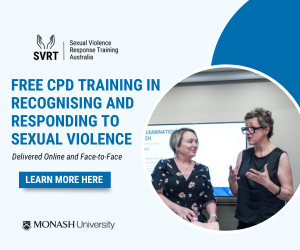The availability of Personal Protective Equipment (PPE) for nurses in the fight against the COVID-19 pandemic varies widely across states and territories and the broad sectors nurses work within, the Australian Nursing and Midwifery Federation says.
Speaking on ABC Radio’s RN Breakfast program earlier this week amid emerging workforce concerns regarding the growing shortage of PPE, ANMF Federal Secretary Annie Butler called on the government to develop nationally consistent policy underpinned by the latest evidence as it tackles the issue.
“In large acute tertiary referral hospitals, policies and protocols are clear, provision of equipment is generally better. But even that is not consistent across the states,” Ms Butler said.
“We’re hearing from our nurse practitioners, many of whom work out in the community, they’re highly skilled nurses with a high-level of knowledge who have a lot of input to give, but they’re not getting access to the right PPE through the Primary Health Networks (PHNs), even though we understand it’s been allocated to them.”
Responding to reports by RN Breakfast host Fran Kelly that nursing staff at one major hospital this week received an email directing them to make the most of their PPE by using it on three consecutive patients, Ms Butler said such practice contravened all infection control protocols.
“I would really encourage any of those staff and nurses to contact their branch of the ANMF as soon as possible so we can get into discussions with the employer straight away,” Ms Butler said.
“It’s fine for the government to say this is the policy but how you implement the policy is critical. We know there is incredible inconsistency across a range of facilities from Royal North Shore Hospital to a small aged care facility.”
Ms Butler, who said she had engaged in discussions with Health Minister Greg Hunt and Commonwealth Chief Nursing and Midwifery Officer Alison McMillan about the way forward, said nationally consistent policy backed by the latest and best evidence was critical.
“I’m concerned that some of the protocols they’re developing now and putting out around PPE for COVID-19 are not necessarily based on the latest and evolving developing evidence.
“We have the opportunity to learn from the overseas experience. We’re a week or two behind, we need to grab this opportunity. If it’s limitations in supply then they need to be completely transparent – What do we have? What are we doing? What’s our prioritisation of how we use PPE while it’s a limited resource?”
Earlier this week, the growing anxiety surrounding the looming shortage of PPE led the ANMF (Tas Branch) to call on state and federal governments to provide detailed information on how much is being stockpiled and how many weeks’ supply is available.
“Nurses, midwives and care workers in the state’s hospitals, general practice’s, aged care facilities and community settings have reported that there is a shortage of PPE which appears to be getting worse,” Branch Secretary Emily Shepherd said.
Questioned on the program by Ms Kelly about some nurses re-using goggles, Ms Butler acknowledged that nurses, like other frontline workers, always strive to deliver the best care for patients and that there could be a risk they might ration resources themselves in a bid to have the greatest impact.
Ms Kelly later posed whether a change.org petition, titled Australian Healthcare Workers demand safe Personal Protective Equipment for COVID-19, which has attracted more than 90,000 signatures, had raised concerns of a workforce revolt.
Ms Butler responded that “there is always an element of fear” but stressed most nurses actually tend to want to help more during crises.
She said the ANMF’s state and territory branches had already received strong interest from retired nurses wanting to help and volunteer their expertise, for example.
Ms Butler suggested a range of strategies could help boost the country’s nursing capacity as it battles COVID-19.
“We can look at retired nurses, we’ve got a number of graduate nurses just in 2020 who haven’t yet got jobs. Our regulatory authority, the Nursing and Midwifery Board of Australia, has also released guidelines on how we might be able to employ second and third year student nurses who are enrolled in approved programs and who are registered with the Board, to be engaged in employment specifically around the COVID-19 crisis.
“We need to be careful, of course, when using students or new grads that we don’t go and put them into fever clinics or to the high level areas. We need to utilise them to keep the system running and deploy our more experienced nurses to the areas they’re better equipped to deal with.”










One Response
We also need to d i suss the fact that Aged Care facilities and nurses will be left on their own once COVID hits care facilities. We have been told that elderly residents will not be transferred to hospital, no one other than aged care nurses will be testing patients for COVID vs swabs as all pathology companies refuse to enter facilities if a resident presents with a fever. Doctors are also refusing to do swabs leaving this solely to aged care nurses who have had limited experience in this area and could place themselves at risk. We need to be talking about how Aged care nurses are going to be safe and supported. ANMF is very quiet about this and it’s frustrating